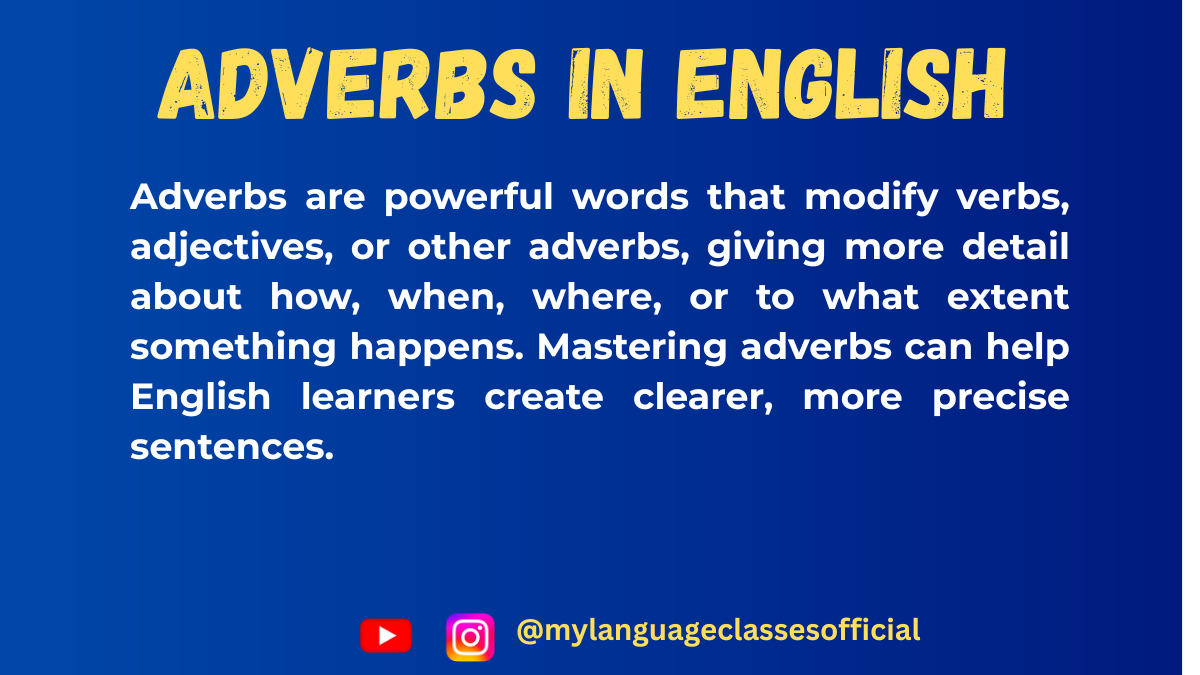Your cart is currently empty!
Tag: interrogative adverbs
-

Interrogative Adverbs in English
Interrogative adverbs are an essential part of English grammar. They are used to ask questions about time, place, reason, and manner. These adverbs help form meaningful and grammatically correct wh-questions in English.
In this blog, we will explore common expressions, usage, conjugation rules, grammar rules, a list of interrogative adverbs, tricky points, example sentences, exercises, and answers to help you master this topic.
Common Expressions Using Interrogative Adverbs
Here are some commonly used sentences with interrogative adverbs in daily life:
- Where is your phone?
- When will you arrive?
- Why are you late?
- How do you cook pasta?
- How much does this cost?
- How often do you exercise?
- How far is the station?
- Why not join us for dinner?
Usage of Interrogative Adverbs
Interrogative adverbs are used in the following situations:
- Asking about place → Where are you going?
- Asking about time → When is the meeting?
- Asking about reason/purpose → Why are you upset?
- Asking about manner or method → How do you solve this problem?
- Asking about frequency → How often do you visit your parents?
- Asking about quantity/amount → How much is this laptop?
- Asking about distance → How far is your house from here?
Conjugation of Interrogative Adverbs
Unlike verbs, interrogative adverbs are not conjugated because they are not action words. However, they are often used with helping verbs (is, are, does, did, can, will, etc.) in questions.
For example:
- Where is my book? (with the verb is)
- How does this machine work? (with the verb does)
- Why did he leave early? (with the verb did)
- When will she arrive? (with the verb will)
Grammar Rules for Interrogative Adverbs
Here are the key grammar rules to remember:
- Interrogative adverbs always introduce questions.
- Where is my car?
- They do not change form, regardless of tense.
- Why did she cry? (past)
- Why is she crying? (present)
- They are usually followed by a verb and subject.
- How do you know him?
- They can be used in indirect questions.
- I don’t know where she went.
- Some interrogative adverbs form compound expressions.
- How long, How far, How much, etc.
List of All Interrogative Adverbs
Adverbs of Place
- Where – Where is my phone?
Adverbs of Time
- When – When will the show start?
Adverbs of Reason
- Why – Why are you so happy today?
Adverbs of Manner
- How – How do you bake a cake?
Adverbs of Quantity/Extent
- How much – How much does this dress cost?
- How many – How many people are coming?
- How far – How far is the airport?
- How long – How long will it take to finish?
- How often – How often do you travel?
Things to Keep in Mind
- “How” can be combined with other words to ask different types of questions (e.g., How far, How many, How long).
- “Why” cannot be used to ask about methods. Use “How” instead. (Why do you cook pasta? ❌ How do you cook pasta? ✅)
- “Where” is only used for places, not for people. (Where is John? ✅ Where is he from? ✅)
- “When” refers only to time, not duration. (When is your birthday? ✅ When long will it take? ❌ How long will it take? ✅)
Example Sentences
- Where do you live?
- When will the train arrive?
- Why are you late?
- How do you fix a broken phone?
- How far is your office?
- How long does it take to learn English?
- How many apples do you have?
- Why did you leave early?
- Where can I find good coffee?
- How much does this shirt cost?
- How often do you go to the gym?
- When does the store open?
- Why didn’t you call me?
- How do you play chess?
- Where did she go?
- When is the next flight?
- Why is the sky blue?
- How tall is that building?
- How does a car engine work?
- Why not join us for lunch?
Exercise: Fill in the Blanks
- ___ is your best friend?
- ___ do you go to school every day?
- ___ are you crying?
- ___ can I buy fresh vegetables?
- ___ does this phone cost?
- ___ do you prepare tea?
- ___ is the library open?
- ___ is your favorite color?
- ___ do birds fly?
- ___ long will this meeting last?
Answers
- Who is your best friend?
- How often do you go to school every day?
- Why are you crying?
- Where can I buy fresh vegetables?
- How much does this phone cost?
- How do you prepare tea?
- When is the library open?
- What is your favorite color?
- How do birds fly?
- How long will this meeting last?
Summary
✔ Interrogative adverbs help form wh-questions in English.
✔ They are used to ask about place, time, reason, manner, frequency, and quantity.
✔ Common examples include where, when, why, how, how much, how long, how often, etc.
✔ They are not conjugated but often used with helping verbs.
✔ Some expressions, like “Why not?”, are idiomatic.
✔ Pay attention to tricky points, such as “How” with other words.Conclusion
Interrogative adverbs are an essential part of English grammar, helping us form meaningful and accurate questions. By understanding their usage, structure, and tricky points, you can improve both spoken and written English. Practice using them in everyday conversations, and soon, they will become second nature.
👉 Visit our blog: mylanguageclassesblog.wordpress.com
👉 Follow on Instagram for daily tips
👉 Subscribe on YouTube for fun grammar videos.Let’s grow your English fluency together—one word at a time!

